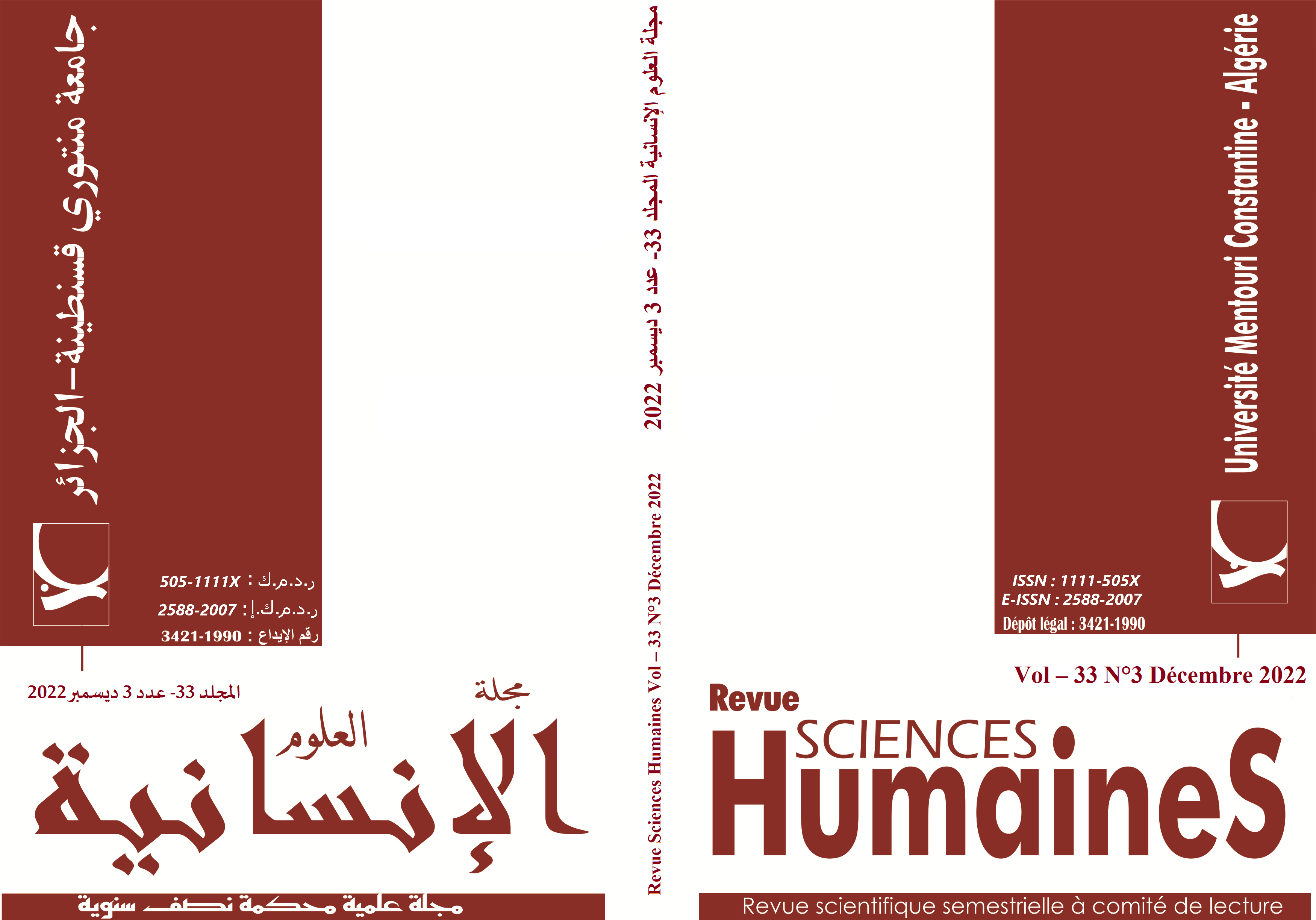The content of vocational rehabilitation programs for people with special needs between theory and reality
Keywords:
vocational rehabilitation, disability, vocational rehabilitation programsAbstract
The study aims to find out whether the educational and training content of vocational rehabilitation programs for people with special needs is adapted to the characteristics of disabled people, through the opinions of specialized trainers, each in their own field, and trainees from people with disabilities who are enrolled in vocational training centers for people with special needs, where the problem of study is concentrated To answer the following questions: The educational and training content of vocational rehabilitation programs for people with special needs special matches the characteristics of people with disabilities? Are there differences in the responses of trainers and trainees on whether the educational and training content of vocational rehabilitation programs for people with special needs are characteristics of the disabled? The study concluded that both trainers and trainees confirm that the educational and training content of special-needs vocational rehabilitation programs is tailored to the characteristics of people with disabilities, and the study also revealed that there are differences between the answers of the trainers and the answers of the trainees. Trainers were noticed to respond to axis sentences in a certain way. Different from trainees on the adequacy of the content of vocational rehabilitation programs to the particularities of disabled people
Downloads
References
يوسف شلبي الزعمط ، التأهيل المهني للمعوقين ، دار الفكر ناشرون و موزعون ، ط 2 ، الأردن ، 2005 ، ص 17 .
نفس المرجع ، ص 24
السيد رمضان ، اسهامات الخدمة الاجتماعية في مجالات رعاية الفئات الخاصة ، دار المعرفة الجامعية ، الاسكندرية ، 1995 ، ص 37 .
رزاق محمد نبيل ، المعوق بين الأدماج الثقافي و الاجتماعي، وزارة الثقافة، الجزائر، 2007 ، ص 22 .
لويس كامل مليكة ، الإعاقة العقلية و الاضطرابات الإرتقائية، مصلحة فكتور كيرس، القاهرة، 1998، ص 18 .
عبد المجيد عبد الرحيم، تنمية الأطفال المعاقين، دار غريب للطباعة و النشر و التوزيع، القاهرة ، 1997، ص 9 .
رزاق محمد نبيل، مرجع سابق، ص 21 .
فتحي محمد موسى، التوجيه المهني في المؤسسات الصناعية، دار زهران للنشر و التوزيع، ط 1، الأردن، 2010، ص 25 .
عمر التوم الشيباني، الرعاية الثقافية للمعاقين، طرابلس ليبيا، 1989، ص 14 .
عثمان فريد رشدي، التدريب المهني، دار الراية للنشر و التوزيع، ط 1، الأردن، 2014، ص 184 .
نايف عابد الزارع، تأهيل ذوي الاحتياجات الخاصة، دار الفكر للطباعة و النشر و التوزيع، ط 1 ، الأردن، 2003، ص 17
نفس المرجع ، ص 17 .
نفس المرجع ، ص16 .
نفس المرجع ، ص17 .
يوسف شلبي الزعمط ، مرجع سابق ، ص 16 .
مروان عبد المجيد إبراهيم ، الرعاية الإجتماعية للفئات الخاصة ( تربويا، نفسيا، رياضيا، تأهيل)، مؤسسة الوراق للنشر و التوزيع، ط 1، الأردن، 2002، ص 339 .
نفس المرجع، ص 399 .
نفس المرجع ، ص 400 .
نفس المرجع ، ص 402 .
نفس المرجع ، ص 402 .
ماجدة السيد عبيد، تأهيل المعاقين، دار صفاء للطباعة و النشر و التوزيع، ط 3، الأردن، 2011، ص 71، 72 .
نفس المرجع، ص 72 .
نايف عابد الزارع ، مرجع سابق، ص 32 .
ماجدة السيد عبيد ، مرجع سابق ، ص 59 .
نفس المرجع ، ص 62 .
نايف عابد الزارع، مرجع سابق ، ص 48 .
ماجدة السيد عبيد ، مرجع سابق، ص 82، 83 .
يوسف شلبي الزعمط ، مرجع سابق، ص 42 .
http//web.worldbank.org.2011.
http://www.djazairess.com/alfadjr/356512.
المنهج التربوي للمؤسسات المتخصصة، مديرية المؤسسات المتخصصة، الجزائر، 2000، ص 1 .
نفس المرجع، ص 1 .
Martin oliver, L’analyse des données quantitatives, Armand colin, Paris, 2005, P11 .
محمد مزيان، مبادئ في البحث النفسي و التربوي، دار الغرب للنشر، وهران، 2002، ص 235 .
Downloads
Published
Issue
Section
License
Copyright (c) 2022 Human Sciences Journal

This work is licensed under a Creative Commons Attribution-NonCommercial 4.0 International License.












